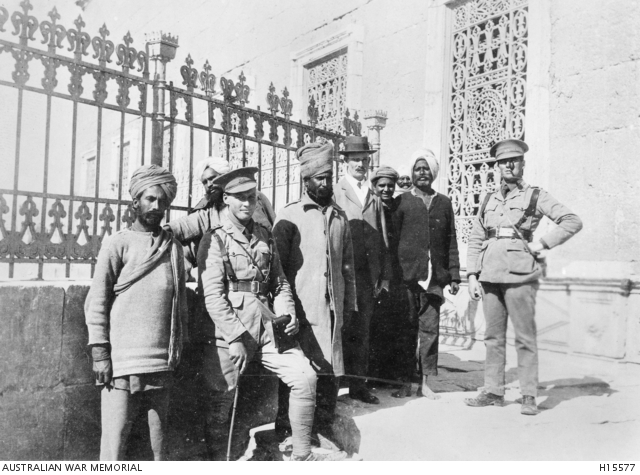| Ranks Held | Captain, Major |
|---|---|
| Birth Date | 01/01/1890 |
| Birth Place | Australia: Victoria, Melbourne, Hawthorn |
| Death Date | 19/07/1916 |
| Death Place | France |
| Final Rank | Major |
| Service | Australian Imperial Force |
| Units |
|
| Places | |
| Events | |
| Conflict/Operation | First World War, 1914-1918 |
Major Geoffrey Gordon McCrae


Geoffrey Gordon McCrae was born on 1 January 1890 at Hawthorn, Victoria. After finishing his schooling he joined the Permanent Forces of the Commonwealth Military Forces and in 1912 was officially commissioned as a second lieutenant. In the following years McCrae attended schooling in infantry and engineering and was attached to the 58th Infantry Regiment (Essendon Rifles) of the Permanent Forces as a captain. On 14 August 1914, shortly after the outbreak of the First World War, he applied to join the Australian Imperial Force (AIF). Several days later, on 19 August 1914, the 24-year-old captain was officially assigned to the newly-formed 7th Infantry Battalion which was being assembled at Broadmeadows. Two months later, on 19 October 1914, McCrae and the first contingent of the 7th Battalion set sail from Melbourne aboard the troopship HMAT Hororata, bound for Egypt.
After arriving at Egypt in December, the men spent the next few months encamped at Mena at the foot of the pyramids, spending their time training whilst partaking in the occasional sightseeing trip to Cairo. McCrae who had been keeping a diary and sending letters home since his embarkation, made detailed sketches and illustrations of the scenery. On 3 April 1915 he was made commander of “D” Company and two days later embarked for Lemnos aboard the troopship HMAT Mashobra. After staging at Lemnos the battalion landed at Gallipoli on 25 April 1915 as part of the second wave ashore. McCrae, however, had been tasked with remaining on board the Mashobra to assist in evacuating the wounded back to Alexandria, although he did make a sketch of the landing at Sari Bair. He rejoined the battalion in the trenches of Gallipoli in May and was twice wounded in action during the following months. On 26 August McCrae was appointed as second-in-command of the battalion and several days later assumed temporary command of the battalion for two weeks. During that same month the battalion was moved into the line at Lone Pine and was evacuated for a rest period to Lemnos in September. The battalion returned to Gallipoli in November and was evacuated the following month. McCrae was commended by Brigadier Harold Bridgwood Walker, commanding officer of the 1st Australian Division, for his work in the trenches during the campaign, notably his zealous and energetic conduct in keeping the men going.
On 7 January 1916, McCrae arrived back in Egypt and was admitted to hospital with enteric fever. It took him several months to fully recover and during this time he continued to write letters home to his family, in one letter including a sketch of the city outside his hospital room window. In May McCrae returned to duty and was transferred to the 60th Battalion with the rank of major. On 18 June the battalion left Egypt for France, arriving at the end of the month. As the men travelled through the devastated French countryside towards the trenches of the Western Front, McCrae made a sketch of the devastation. On 2 July, with the transfer of Lieutenant Colonel Alfred Jackson to the 58th Battalion, McCrae took temporary command of the 60th Battalion. He wrote one last letter to his family on 19 July 1916, shortly before leading the battalion into action at Fromelles. McCrae was killed in action later that same day leading his battalion in the attack against the enemy trenches. He was 26 years old.
On 12 October 1916, Brigadier Harold Edward (Pompey) Elliott, wrote a commendation for McCrae, remarking upon his leadership of the 60th Battalion, the improvement of its morale and discipline under McCrae, and the courage and devotion to duty with which McCrae conducted himself. He was posthumously mentioned in the despatches of General Douglas Haig on 13 November 1916 for his conspicuous and gallant services and devotion to duty. Geoffrey Gordon McCrae is buried at Rue-Du-Bois Military Cemetery, Fleurbaix, Bethune, Nord Pas de Calais, France.





